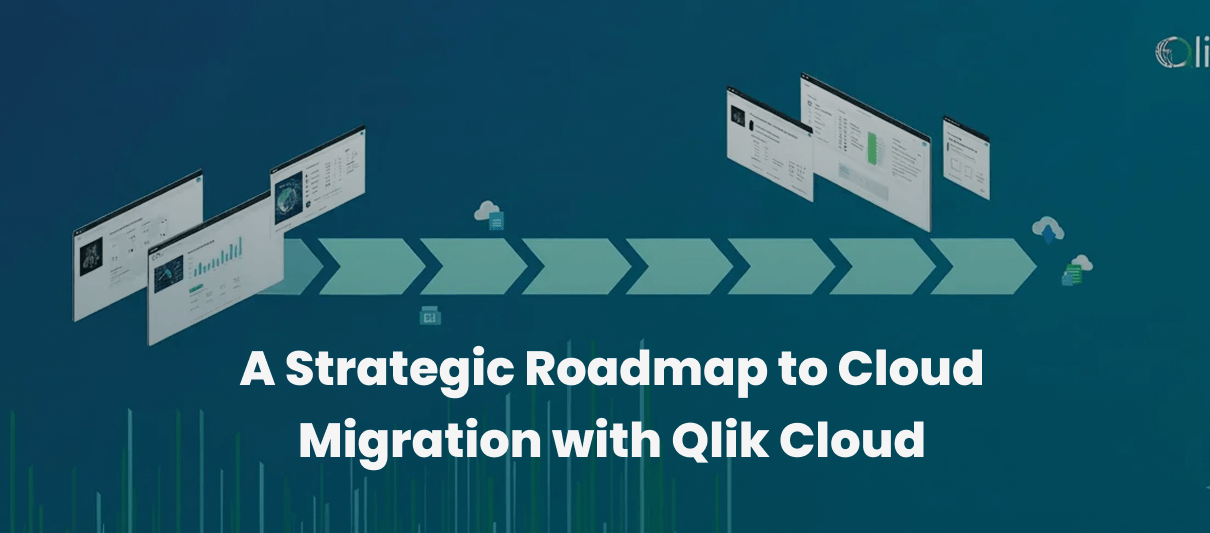Optimising Financial Data: Transforming Financial Operations Through Data Cleansing
Strategic insights are pivotal to financial processes. From enhancing decision-making capabilities to driving operational efficiencies, they shape every aspect of financial operations. However, to attain reliable insights, clean, qualitative financial data is imperative. With high-quality financial data, financial institutions can achieve improved outcomes and deliver a seamless customer experience.
Research shows that businesses incur an average cost of $12.9 million annually due to poor data quality. This highlights the critical need for effective data cleansing procedures for enterprises to mitigate financial losses and enhance operational competence.
Data cleansing is prominent for financial teams. It involves removing duplicates, standardising formats, filling in missing values, and ensuring data accuracy. This process helps organisations reduce risks, boost productivity, and foster business growth.
Let’s dive deeper into the blog to understand how data cleansing optimises financial data, transforming financial operations.
Significance of Data Cleansing in Financial Operations
To put it simply, data cleansing involves identifying and correcting data errors or inconsistencies to ensure accuracy and completeness. It is crucial for maintaining consistent, reliable, error-free data across business functions like analysis, reporting, and decision-making.

Data cleansing is indispensable for finance teams as it ensures the precision, dependability, and usefulness of financial data. Data is extracted from diverse sources like databases, files, or applications and serves as the cornerstone of every financial decision.
Data cleansing standardises financial information, facilitating real-time error detection and correction. Additionally, it significantly enhances data quality, which is crucial for maintaining financial integrity and making informed decisions.
Challenges of Using Inaccurate Data in Financial Operations
Accurate data is paramount in financial operations, supporting critical processes such as reporting, analysis, budgeting, forecasting, and compliance endeavours. Inaccurate data, on the other hand, can cause severe problems for a CFO and a company’s financial operations.
Let’s break down the challenges of data inaccuracy in financial operations:
1. Poor Decision-Making Outcomes
Data precision and clarity are crucial for effective decision-making. It involves consolidating data from various sources, ensuring efficient storage, organisation, and management. Unclean data can lead to flawed insights, failed conclusions, operational inefficiencies, and missed strategic advantages.
Solution: Establish comprehensive data cleansing procedures to guarantee data accuracy and reliability, resulting in well-informed insights, sound conclusions, and strategic benefits.
2. Delayed Financial Workflow
Distinctive types of AI serve a unique approach based on their capabilities and functions in technology and industry.
The three types of AI include:
- Extended Financial Closings: Monthly, quarterly, and yearly financial closings are complex procedures that require accurate data. Errors such as duplicate entries, incorrect amounts, or missing data can extend these periods; finance teams must spend additional time verifying and correcting mistakes, resulting in delays in finalising financial records.
- Slow Budgeting Processes : Inaccurate data leads to frequent budget revisions, extended reconciliation times, and approval process delays. It complicates financial analyses, requiring additional time for verification and adjustment, thus slowing down overall budgeting cycles.
Solution: Automated data cleaning solutions in financial systems reduce errors, expedite budget closing processes, deploy automated data validation tools to ensure reliability, and streamline budgeting and reconciliation.
3. Poor Customer and Supplier Relations
The invoice and payment process focuses on customer relations, but the process can take longer due to mistakes caused by inaccurate data. These delays can lead to customer dissatisfaction and weakened relationships.
Therefore, ensuring data accuracy is crucial to maintaining efficient operations and positive customer interactions.
Solution: Leveraging advanced data hygiene tools can help maintain invoicing and payment record documentation, which enhances customer satisfaction and supplier relationships.
4. Difficulty in Performance Evaluation
When unreliable financial data makes it difficult to assess the company’s actual financial performance, measuring KPIs towards enterprise goals can also be misleading, leading to wrong decision-making and poor resource allocation.
Moreover, incorrect data weakens performance evaluation, impacting investment decisions and risk management effectiveness for portfolio and investment managers.
Solution: Data cleansing enhances enterprises’ ability to access reliable performance metrics, improving KPI measurement and facilitating resource allocation decisions. It ensures businesses operate with accurate data insights, driving performance and strategic growth initiatives.
Benefits of Data Cleansing in Financial Operations
Ensuring high data quality in financial systems through data cleansing provides several benefits. It enhances data integrity by removing inaccuracies, optimising data, and integrating credible information from trusted sources
Let’s break down the benefits of data cleansing:
1. Enhancing Data Precision
High-quality data offers dependable insights (customer feedback, market analysis, and expert opinions) for achieving business objectives and robust financial planning.
By leveraging data cleansing tools, businesses can clean and organise data that does not meet regulatory standards in financial operations. On top of that the process ensures that the cleansed data is prepared for further financial processing.
2. Strengthen Decision-Making
Consistent data is the foundation for effective decision-making. By leveraging this consistent data, organisations can confidently make choices, draw conclusions, refine investment strategies, improve risk management, and adapt to market changes.
3. Builds Credibility and Trust
Data cleansing promotes transparency and enhances data quality throughout its lifecycle. Cleansed data facilitates transparent reporting and enhances reputation in competitive financial markets.
It ensures the reliability of financial data, which builds trust among stakeholders, investors and customers and enhances the organisation’s brand image.
4. Cost Efficiency Initiatives
Scrubbed data minimises the risk of financial errors and improves financial viability. Effective data cleansing can lead to significant cost savings. Cleaning of data involves the early detection and elimination of inaccuracies within financial data.
This proactive approach helps organisations avoid unnecessary expenses, such as the costs associated with correcting mistakes and ensuring data precision.
5. Seamless Operations
Manual processing of unclean data disrupts workflows, leading to excessive resource consumption and reduced efficiency. Data cleansing integrates automation efficiency, streamlines business operations, and ensures accurate data that enhances productivity. It fosters effective resource use, reduces risks, and promotes integrity.
Process of Data Cleansing in Financial Operations
Data cleaning reduces errors, enhances data quality, saves time and money, and boosts organisational efficiency. However, using unreliable data may result in poor analysis and draw bad conclusions.
Let’s uncover the process of data cleansing to maintain precise, trustworthy financial information and support strategic planning.
1. Removing Duplicate Data
Data duplication is essential in the finance sector, where the outcome of this data will result in an inflation of higher data volumes. By using data hygiene tools, financial teams can identify and eliminate exact and near duplicates, ensuring that each data entry is unique.
For example, a bank has entered multiple name entries for the same customer due to various spellings. This inconsistency can lead to confusion and errors in customer interactions. By eliminating these duplicates through effective data hygiene tools, the bank streamlines client data, improves service delivery and enables more precise consumer profiling.
2. Standardising the Data
Data standardisation is converting data from different sources into a standard or uniform format to ensure consistency. This allows computers or machine learning algorithms to quickly understand and process the data consistently.
For example, in a financial institution, various departments record dates in different formats (MM/DD/YYYY, DD/MM/YYYY). Standardising data format records as one format (DD/MM/YYYY) ensures consistency, making data integration and analysis easy.
3. Fill in Missing Values
The integrity of the data hinges on the validity of the information provided. Imputation techniques fill in missing values, ensuring datasets remain complete and usable without introducing significant biases.
For example, Rs. 25,000 needs to be added across 50 transaction records. Due to system errors, the process is not feasible. Using data imputation techniques, missing values are estimated from similar transactions to fill the gaps and ensure completeness.
4. Remove Irrelevant Data
Eliminating irrelevant data from a dataset, such as outdated records, unrelated information, or duplicates, improves the focus and quality of the analysis. The cleaning of data helps streamline the dataset, making it more focused and efficient for accurate financial analysis and reporting.
For example, routine expenses like office supplies are not essential when analysing investment returns. Excluding these transactions allows the focus to remain on significant financial activities, such as buying and selling assets.
5. Data Validation
An essential process of data cleaning is data validation. Data validation aims to analyse the quality and accuracy of data sources (databases, files, and applications) before using or performing any activity based on business objectives.
For example, incorrect currency formatting can lead to confusion and errors in financial records. Data validation ensures that all monetary values are in the correct format. It includes currency symbols like (USD, INR) and consistent decimal places, which helps maintain accuracy in financial reporting.
6. Quality Assurance
Implementing regular checks and audits is a simple and effective procedure for assessing the data-cleaning process and maintaining data quality over time. By establishing a regular schedule for data cleansing, whether daily, weekly, or monthly, ensures consistency, which is critical to maintain data integrity.
For example, quarterly audits in a financial firm ensure the quality, compliance and currency of financial records. This process supports reliable financial reporting and maintains regulatory standards.
7. Documentation and Monitoring
Documenting the data-cleaning process and associated changes allows financial operations to gain insights into applied methods and transformations. Continuous monitoring facilitates improvements, maintains high-quality standards throughout the process, and learns from past actions.
For example, a bank carefully records every step of its data cleaning process, ensuring transparency and accountability in managing data, like correcting customer account details for accurate financial reporting and regulatory compliance.
Future Trends of Data Cleansing
Staying ahead in business requires embracing the latest data cleansing innovations. Specifically, in 2024, to achieve effective financial outcomes, it is important to adopt modern data cleansing procedures.
Let’s take a look at the future trends of data cleansing:
1. AI and ML Automation
Advanced artificial intelligence (AI) and machine learning (ML) algorithms simplify the data cleaning process by detecting patterns and correcting errors autonomously. AI-powered data cleansing tools standardise datasets to ensure uniformity and centralise them into a single format.
ML algorithms simplify the process of finding inaccurate data and classifying it into specific groups for easy understanding. It enhances data quality by swiftly flagging inconsistencies and ensuring reliable datasets.
2. Automated Data Cleansing Tools
Manual data cleansing can be time-consuming and labor-intensive which will result in slower financial operations. Automation in data cleaning saves time, reduces the workload and streamlines the cleaning process. Integrating machine learning algorithms into data cleaning can enhance the detection process by quickly identifying anomalies in datasets.
Moreover, AI-enabled self-learning systems in financial activities can help recognise patterns and identify errors. This helps financial analysts improve decision-making and operational effectiveness using high-quality and reliable datasets.
3. Real-time Data Cleansing
Real-time data cleansing tools, enhanced by machine learning algorithms, swiftly process data upon acquisition, ensuring it is prepared for complete data analysis. The extracted data from sources stored in the cloud is used to maintain its integrity and facilitate seamless integration across various applications and systems.
This integration of AI solutions accelerates data validation, guaranteeing it is prepared for immediate use, which is vital for financial operations to overcome data inconsistency and delays in decision-making.
4. Blockchain and Decentralised Data Validation
Blockchain plays a significant role in preventing fraudulent activity and enhancing security. Cryptographic techniques and consensus algorithms are used to secure data against unauthorised access and tampering.
By utilising decentralised data validation, blockchain ensures accurate timestamps, verifies every data entry, and allows networks to access data securely
Maximise your Financial Data Excellence with SquareOne
SquareOne Technologies offers comprehensive data management solutions in the GCC region to streamline financial data processes. Their data quality services assess and improve data quality, ensuring it is cleansed, detailed, and ready for analysis, leading to informed decision-making and overall efficiency.
Are you facing challenges with data integrity and cleansing in your financial operations? Schedule a call with SquareOne today to transform your financial operations with clean and reliable data, boosting data integrity, accuracy, decision-making, and mitigation of financial risks.
Final Note
Data cleansing paves the way for adequate data preparation, integration, and management. Advanced real-time and automated tools can help financial operations swiftly process and verify data, reducing the risks associated with inaccurate or incomplete information.
Investing in robust data-cleaning solutions mitigates financial losses and builds credibility and trust, ultimately driving growth and long-term success.
Get started with SquareOne today to automate your data cleansing procedures and ensure reliable data for all applications. SquareOne’s data management services unify data migration, integration, and analysis, providing an accurate data overview.

















